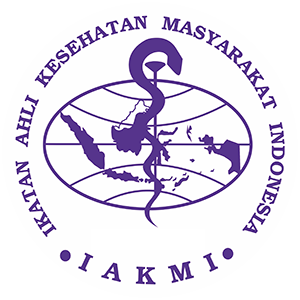EFFECTIVENESS OF EARLY POSTOPERATIVE EXERCISE PROGRAM IN POST HIP ARTHROPLASTY PATIENTS
DOI:
https://doi.org/10.30787/gaster.v21i1.880Keywords:
early postoperative exercise, Harris Hip Score, hip arthroplastyAbstract
Background: Patients after undergoing arthroplasty surgery will experience several changes in carrying out functional activities and daily routines. This is due to altered joint and muscle function due to decreased strength and limited range of motion after arthroplasty surgery. Post-hip arthroplasty conditions require comprehensive treatment so as not to cause impairment/disability that will interfere with function and gait. How effective is the early postoperative exercise program in preventing further decline in ability and speeding recovery? Methods: This exercise program is given since the patient has finished surgery and is gradually progressing to standing and walking exercises. This research was conducted on patients in the inpatient room of RS Ortopedi Prof. Dr. R. Soeharso Surakarta. Assessment and evaluation of post-hip arthroplasty results using the Harris Hip Score functional index before and after being given an exercise program. Results: The statistical test showed that the data was not normally distributed (p<0.05) and the results of the influence test using the Wilcoxon Test showed that there was an effect of early postoperative exercise on reducing pain (p=0.005) and increasing the Harris Hip Score (HHS) index. The result of the action is that there is an increase in functional ability in post-hip arthroplasty patients. Conclusion: Based on this study, it can be concluded that the program of giving exercise therapy as early as possible in post-hip arthroplasty patients can accelerate recovery and improve functional ability.References
Al-Otaibi ML, Waliullah S, & Kumar V. (2021). Total Hip Replacement in Sickle Cell Disease Patients with Avascular Necrosis of Head of Femur: A Retrospective Observational Study. Indian Journal of Orthopaedics, 55(5):1225–1231. DOI: 10.1007/s43465-021-00394-6
Aresti N, Kassam J, Bartlett D, & Kutty S. (2017). Primary Care Management of Postoperative Shoulder, Hip, and Knee Arthroplasty. British medical journal, 359(j4431). DOI: https://doi.org/10.1136/bmj.j4431
Bawono S, Maryanto I, & Idulhaq,M. (2018). Skor Fungsional Hip (Harris Hip Score) pada Pasien Osteoarthritis (OA) Hip Joint dengan Defek Acetabulum yang Dilakukan Total Hip Arthroplasty (THR) dan Acetabuloplasty. Biomedika, 10(2):89-93. DOI: https://doi.org/10.23917/biomedika.v10i2.7018
Fikriyah IN, Naufal AF, & Wijianto. (2021). Hubungan Keseimbangan Dinamis dengan Activity of Daily Living pada Lansia Muda. Fisiomu: Physiotherapy Evidences, 2(2):59-64. DOI: 10.23917/fisiomu.v2i2.10060
Kisner C, Colby LA, & Borstad J. (2018). Therapeutic Exercise: Foundations and Techniques 7th Edition. Philadelphia: F.A. Davis Company.
Kwon O-Y, Jung D-Y, Kim Y, Cho S-H, & Yi C-H. (2003). Effects of Ankle Exercise Combined with Deep Breathing on Blood Flow Velocity in the Femoral Vein. The Australian Journal of Physiotherapy, 49(4):253-258. DOI: 10.1016/s0004-9514(14)60141-0
Lippert LS. (2011). Clinical Kinesiology and Anatomy 5th Edition. Philadelphia: F. A. Davis Company.
Madara KC. Marmon A, Aljehani M, Hunter-Giordano A, Zeni JJr, & Raisis L. (2019). Progressive Rehabilitation After Total Hip Arthroplasty: a Pilot dan Feasible Study. International Journal of Sports Physical Therapy, 14(4):564-581. PMCID: PMC6670053
Mistry JB, Elmallah RDK, Bhave A, Chughtai M, Cherian JJ, McGinn T, Harwin SF, & Mont MA. (2016). Rehabilitative Guidelines fter Total Knee Arthroplasty: a Review. The Journal of Knee Surgery, 29(3):201–217. DOI: 10.1055/s-0036-1579670
Pereira LC, Kerr J, & Jolles BM. (2016). Intra-articular Steroid Injection for Osteoarthritis of the Hip Prior to Total Hip Arthroplasty, is it safe? a Systematic Review. The Bone & Joint Journal, 98-B (8):1027-1035. DOI: 10.1302/0301-620X.98B8.37420
Pivec R, Johnson AJ, Mears SC, & Mont MA. (2012). Hip Arthroplasty. The Lancet, 380(9855):1768-1777. DOI: 10.1016/S0140-6736(12)60607-2
Pristianto A, Wijianto, & Rahman F. (2018). Terapi latihan Dasar. Surakarta: Muhammadiyah University Press.
Rofi'atin & Perdana SS. (2020). Efektivitas Ankle Control Balance Training (ACBT) Terhadap Gait Ability Lansia. Fisiomu: Physiotherapy Evidences, 1(2), 35-41. DOI: 10.23917/fisiomu.v1i2.9813
Schache MB, McClelland JA, & Webster KE. (2016). Does the Addition of Hip Strengthening Exercises Improve Outcomes Following Total Knee Arthroplasty? A Study Protocol for a Randomized Trial. BioMed Central musculoskeletal disorders, 17(259):1-12. DOI: 10.1186/s12891-016-1104-x
Solomon L, Warwick D, & Nayagam S. (2010). Apley’s System of Orthopaedics and Fractures 9th Edition. London: Hodder Education.
Talan YES. (2009). Pengaruh Free Active Exercise (FAE) Terhadap Peningkatan Range of Motion (ROM) Sendi Lutut Lansia. Laporan penelitian. Kupang: STIKES Citra Husada Mandiri.
Whittle MW. (2007). Gait Analysis: an Introduction 4th Edition. Butterworth Heinemann Elsevier.
World Physiotherapy. (2020). Description of physical therapy: Policy statement.
Yang X, Li G-H, Wang H-J, & Wang C-Y. (2019). Continuous Passive Motion After Total Knee Arthroplasty: A Systematic Review and Metaanalysis of Associated Effects on Clinical Outcomes. Archives of Physical Medicine and Rehabilitation, 100(9):1763– 1778. DOI: 10.1016/j.apmr.2019.02.001
Downloads
Published
How to Cite
Issue
Section
License
Copyright (c) 2023 Gaster

This work is licensed under a Creative Commons Attribution-ShareAlike 4.0 International License.














